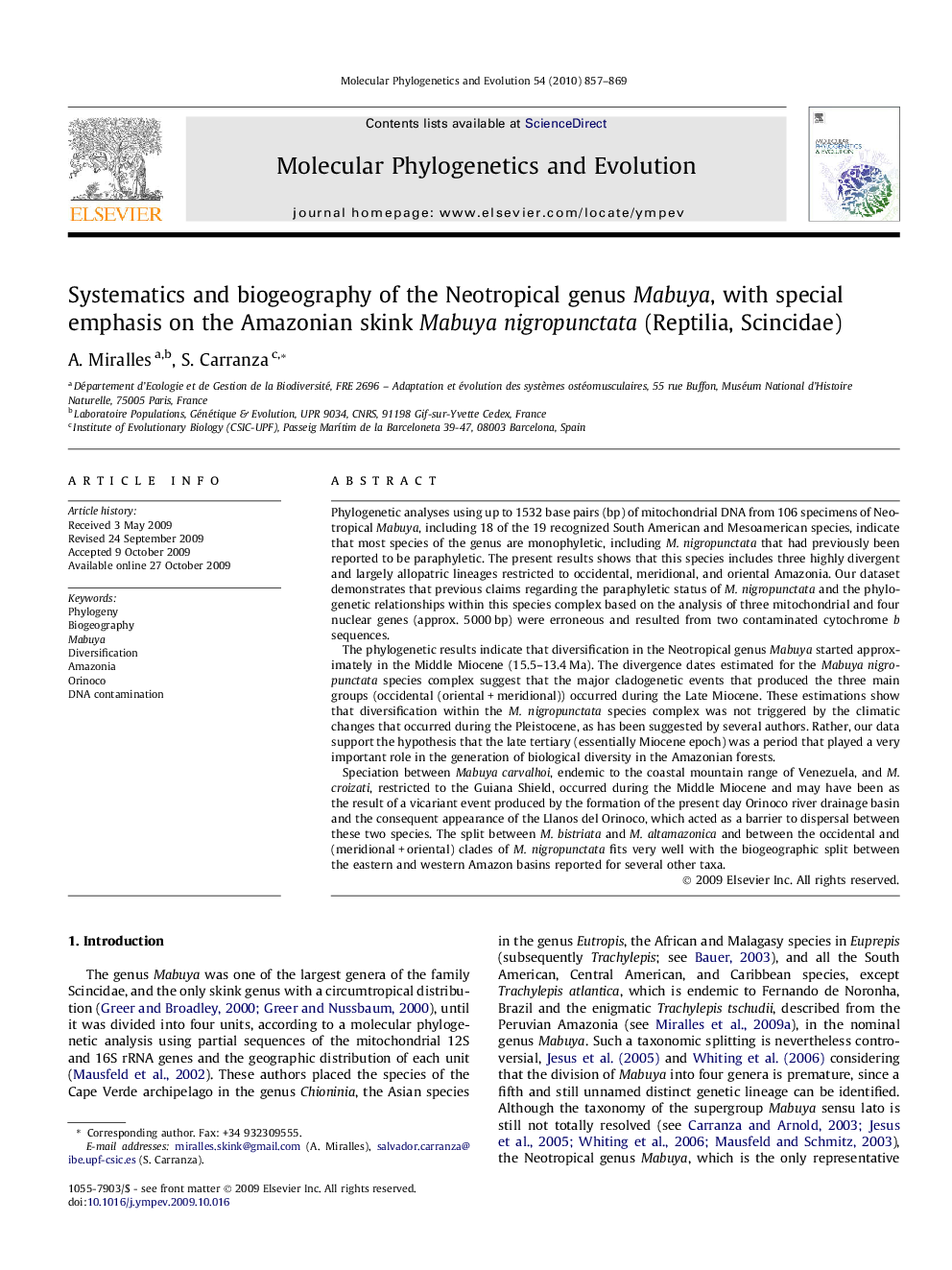| کد مقاله | کد نشریه | سال انتشار | مقاله انگلیسی | نسخه تمام متن |
|---|---|---|---|---|
| 2834874 | 1164325 | 2010 | 13 صفحه PDF | دانلود رایگان |

Phylogenetic analyses using up to 1532 base pairs (bp) of mitochondrial DNA from 106 specimens of Neotropical Mabuya, including 18 of the 19 recognized South American and Mesoamerican species, indicate that most species of the genus are monophyletic, including M. nigropunctata that had previously been reported to be paraphyletic. The present results shows that this species includes three highly divergent and largely allopatric lineages restricted to occidental, meridional, and oriental Amazonia. Our dataset demonstrates that previous claims regarding the paraphyletic status of M. nigropunctata and the phylogenetic relationships within this species complex based on the analysis of three mitochondrial and four nuclear genes (approx. 5000 bp) were erroneous and resulted from two contaminated cytochrome b sequences.The phylogenetic results indicate that diversification in the Neotropical genus Mabuya started approximately in the Middle Miocene (15.5–13.4 Ma). The divergence dates estimated for the Mabuya nigropunctata species complex suggest that the major cladogenetic events that produced the three main groups (occidental (oriental + meridional)) occurred during the Late Miocene. These estimations show that diversification within the M. nigropunctata species complex was not triggered by the climatic changes that occurred during the Pleistocene, as has been suggested by several authors. Rather, our data support the hypothesis that the late tertiary (essentially Miocene epoch) was a period that played a very important role in the generation of biological diversity in the Amazonian forests.Speciation between Mabuyacarvalhoi, endemic to the coastal mountain range of Venezuela, and M. croizati, restricted to the Guiana Shield, occurred during the Middle Miocene and may have been as the result of a vicariant event produced by the formation of the present day Orinoco river drainage basin and the consequent appearance of the Llanos del Orinoco, which acted as a barrier to dispersal between these two species. The split between M. bistriata and M. altamazonica and between the occidental and (meridional + oriental) clades of M. nigropunctata fits very well with the biogeographic split between the eastern and western Amazon basins reported for several other taxa.
Journal: Molecular Phylogenetics and Evolution - Volume 54, Issue 3, March 2010, Pages 857–869